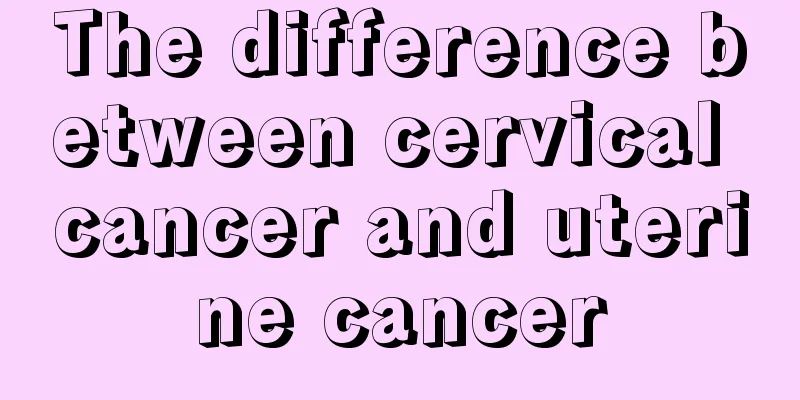The difference between cervical cancer and uterine cancer

|
Cervical cancer is a tumor disease that is common in middle-aged women between 40 and 60 years old. The disease is usually accompanied by vaginal discharge, vaginal bleeding, contact bleeding, and postmenopausal vaginal bleeding. Although this disease is very common, many people still do not know what cervical cancer is. What exactly is cervical cancer? Cervical cancer is one of the most common malignant tumors of the female reproductive system, and its incidence rate ranks second only to breast cancer in the number of female malignant tumors. Women are afraid of cervical cancer, but they don't know the root cause of cervical cancer. The professor introduced that it has been confirmed that human papillomavirus (HPV) infection is the culprit of cervical precancerous lesions and cervical cancer. In other words, without HPV infection, cervical cancer will not occur. HPV is mainly transmitted through sexual intercourse, and can also be infected through contact between reproductive organs and unclean utensils, such as using unsterilized public toilets and bathtubs. Many women think that only unclean sexual intercourse can cause HPV infection, but this is not the case. HPV is widely present in the daily environment. Even in a one-to-one sexual relationship, HPV can be infected through sex or contact with each other. Endometrial cancer is a malignant tumor originating from the endometrial glands, also known as uterine body cancer, most of which are adenocarcinomas. It is one of the three major malignant tumors of the female genitalia. In my country, endometrial cancer is much lower than cervical cancer, but in some developed Western countries, this disease is higher than cervical cancer and ranks first among gynecological malignancies. The peak age for endometrial cancer is 58-61 years old, accounting for about 7% of all female cancers and 20%-30% of reproductive tract malignancies. The incidence rate has been on the rise in recent years, approaching or even exceeding that of cervical cancer. It is related to long-term estrogen stimulation, obesity, hypertension, diabetes, infertility or sterility, menopause and other physical and genetic factors. The treatment principle of endometrial cancer is to choose the appropriate treatment method according to the patient's age, physical condition, lesion range and histological type. Since the vast majority of endometrial cancers are adenocarcinomas, which are not very sensitive to radiotherapy, surgery is the main treatment. Other comprehensive treatments include radiotherapy, chemotherapy and drugs (chemotherapy, hormones, etc.). Early patients are mainly treated with surgery, and adjuvant therapy is selected according to the results of surgical-pathological staging and high-risk factors for recurrence; advanced patients are treated with comprehensive treatment including surgery, radiotherapy and drugs. |
<<: How to diagnose uterine cancer
>>: What medicine should I take if I have uterine cancer
Recommend
How long will it take to die from ovarian tumor infection
Will ovarian tumors threaten women's lives? A...
What should we pay attention to when releasing crayfish?
People often buy crayfish to eat. There are many ...
Symptoms of disseminated intravascular coagulation
Many people do not understand what disseminated i...
Tips on tuberculosis
Because tuberculosis is highly contagious, many p...
What is autologous stem cell transplantation
Autologous stem cell transplantation is an advanc...
What are the symptoms of fever caused by nasopharyngeal cancer
What are the symptoms of fever caused by nasophar...
Selection criteria for large hospitals treating ovarian cancer
Now that we know that our loved ones have cancer,...
Is supraventricular tachycardia life-threatening?
Whether supraventricular tachycardia is life-thre...
What are the benefits of hot springs
There are many benefits of taking a hot spring ba...
Why does my face turn red after eating?
Blushing after a meal is generally a symptom of y...
Early signs of liver cancer in women
In the early stages of liver cancer in women, the...
Wet compress cotton pad
When applying makeup, cosmetic cotton plays a ver...
Can brain necrosis be recovered?
Brain necrosis is also called brain atrophy. Gene...
How is endometrial cancer diagnosed? How is endometrial cancer treated?
If you want to know if you have endometrial cance...
How to relieve allergic rhinitis?
The change of seasons is the most difficult time ...









